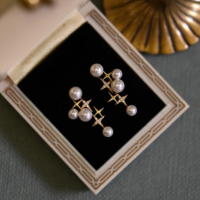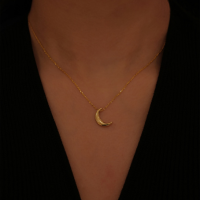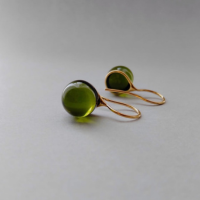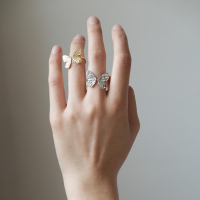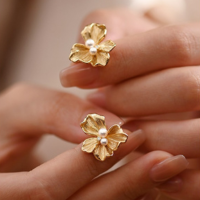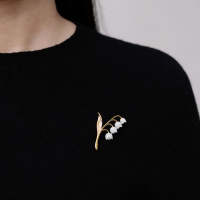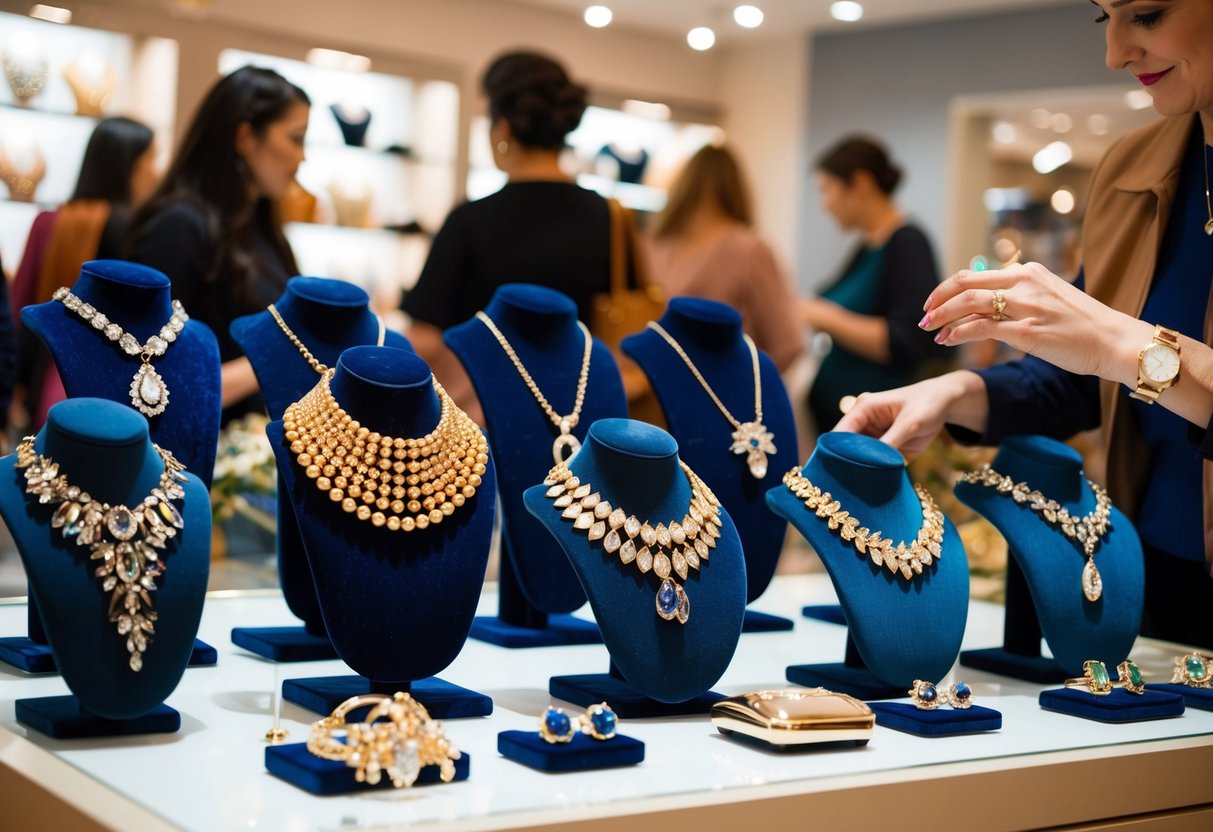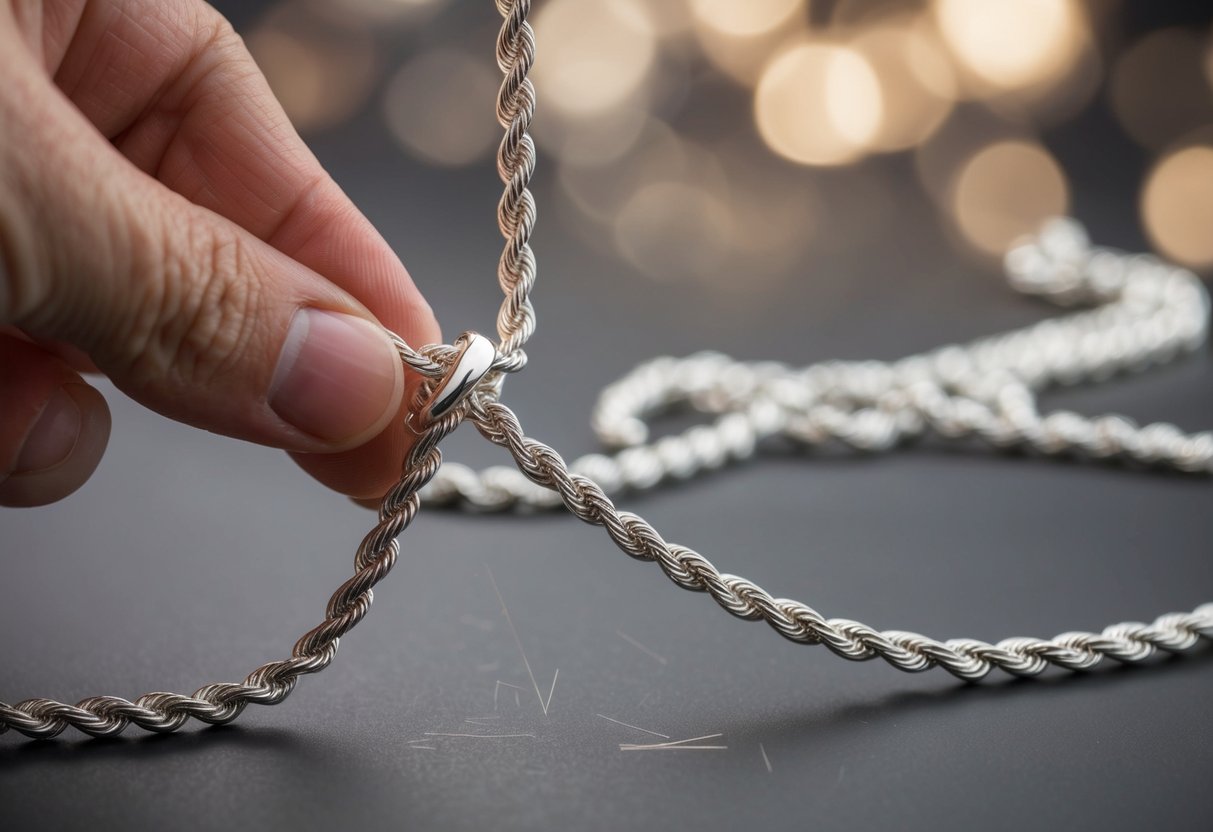
What Is the Best Quality Silver for Jewelry
Check out our personalized jewelry collections! (kids drawing jewelry, coin jewelry, wire jewelry, fingerprint jewelry, handwriting jewelry, and more)
When it comes to choosing silver for jewelry, many options are available, but not all are created equal. Sterling silver stands as the best quality silver for jewelry, prized for its durability and timeless beauty. Sterling silver contains 92.5% pure silver, mixed with other metals to enhance its strength, ensuring your jewelry stays radiant for years.
We know that silver is adored for its shiny finish and elegance. There are different types like fine silver, coin silver, and nickel silver, yet sterling remains the most popular due to its balance of quality and affordability. It’s loved by jewelers and customers alike for its versatility and classic appeal.
At the heart of every stunning piece is the craftsmanship. Sterling silver allows designers to create intricate and breathtaking designs. For those who cherish long-lasting, luxurious pieces, understanding the care and sourcing of your silver jewelry can make all the difference in its brilliance and ethics.
Key Takeaways
- Sterling silver is the top choice for quality jewelry.
- Craftsmanship enhances silver's beauty and value.
- Proper care ensures lasting shine and durability.
Understanding Silver in Jewelry
Silver is a popular choice in the world of jewelry. It's known for its shine and versatility. When we think about the types of silver used in jewelry, there are a few common varieties. Each one has its unique features.
Sterling Silver is the most common type. It is 92.5% silver mixed with 7.5% other metals, often copper. This mix gives it strength and durability, making it perfect for rings, necklaces, and bracelets.
Fine Silver is 99.9% pure. It looks bright and beautiful but is softer than sterling silver, which means it is more prone to scratches and bending. It's often used for earrings and pendants where less wear and tear occur.
Here is a quick comparison:
| Type | Purity | Notes |
|---|---|---|
| Sterling Silver | 92.5% silver | Durable, commonly used |
| Fine Silver | 99.9% silver | Softer, has a higher purity |
We also have Silver-Plated jewelry. This is a layer of silver over a base metal. It's less expensive, but the silver can wear off over time. Regular care and maintenance are important.
It's important to recognize the hallmarks on silver jewelry. This small stamp tells us about the silver content. For example, sterling silver often has '925' marked on it, while fine silver might have '999'.
By understanding these facts, we can make better choices in selecting beautiful silver jewelry that fits our needs and lifestyle.
Defining Sterling Silver
Sterling silver is a popular choice in jewelry making for its shine and durability. It's important to know what makes it special, including its composition and identifying marks.
Composition and Quality
Sterling silver is an alloy made up of 92.5% pure silver and 7.5% other metals. This mixture is used because pure silver is too soft for making durable items like jewelry. The added metals, often copper, make sterling silver strong and less prone to damage.
The quality of sterling silver is important for jewelry lovers. It must meet strict standards to be called "sterling." When we choose sterling silver jewelry, we are choosing pieces that are beautiful yet sturdy, making them ideal for everyday wear.
Hallmarks and Stamps
Hallmarks and stamps are crucial for identifying sterling silver pieces. We often find marks on jewelry, indicating the quality and authenticity of the silver. Commonly, a piece will have a ".925" stamp, which confirms it is 92.5% pure silver.
These marks assure us of the silver's quality. In some countries, additional symbols or letters might show the maker or origin. Knowing how to read these stamps allows us to make informed purchases. Authentic markings offer peace of mind, ensuring that our treasured silver items are genuine and of high quality.
Comparing Silver Types
Silver jewelry comes in several forms, each with unique qualities. We will explore fine silver, sterling silver, Argentium silver, and silver-filled versus silver-plated options. These types differ mainly in purity, durability, and how they are made.
Fine Silver Versus Sterling Silver
Fine Silver is 99.9% pure silver. Its high purity gives it a bright luster and hypoallergenic properties. Fine silver is soft, which makes it less durable for everyday wear. It's ideal for earrings or pieces not subjected to heavy use.
Sterling Silver consists of 92.5% silver, combined with 7.5% other metals, usually copper. This mix strengthens the silver, making it more suitable for rings, bracelets, and other jewelry that require durability. Sterling silver is more versatile and tends to be more affordable than fine silver.
Argentium Silver Properties
Argentium Silver is a modern type of silver alloy that contains more pure silver than traditional sterling. It includes germanium, which helps reduce tarnishing and makes the metal easier to maintain.
Argentium silver is hypoallergenic and is known for its bright whiteness and durability. It’s often favored by jewelers due to its low maintenance and ability to be fused without solder.
Though slightly more expensive, the reduced maintenance and tarnish resistance make Argentium a popular choice for those seeking quality in their jewelry.
Silver-Filled and Silver-Plated Differences
Silver-Filled metals have a thicker layer of silver bonded to a base metal compared to silver-plated items. Typically, 5-10% of the weight is sterling silver, providing better durability and tarnish resistance than plated options.
Silver-Plated items have a thin layer of silver over a base metal. They’re more affordable but prone to wear and tarnish quickly with regular use. Frequent polishing and special care are required to maintain their appearance.
When choosing between silver-filled and silver-plated, silver-filled offers better longevity and value for those seeking affordable yet quality pieces.
Durability and Wearability
When looking at silver jewelry, thinking about its durability and ease of wear is important. We explore how it handles tarnish and what it's like for daily use.
Tarnish Resistance
Sterling silver is often chosen for jewelry because of its strength and beauty. To keep it shiny and free from tarnish, some alloys include small amounts of metals like palladium or rhodium. These metals help protect the silver from reacting with air, which can make it look dull.
Pieces coated with rhodium are especially resistant to tarnish and can last longer with less maintenance. While no silver is completely tarnish-proof, these added protections can help jewelry retain its sparkle.
Regular cleaning can also prevent tarnish, but choosing the right type of silver makes care easier. We recommend selecting silver alloys specifically designed to resist tarnish for those who want less upkeep yet elegance.
Everyday Use
Silver jewelry is a popular choice for everyday wear thanks to its versatility and beauty. Sterling silver, made of 92.5% silver, balances purity with added metal strength. This mix keeps jewelry strong enough for daily wear and minor bumps.
When wearing silver every day, consider both design and setting. A simple, sturdy design avoids snags and damage. Jewelry for daily use should fit comfortably and be easy to clean. There's a wide variety of styles, from casual earrings to bold bracelets.
While pure silver is softer and can scratch easily, sterling silver is better for rings and necklaces that see more use. For those who want durable and beautiful jewelry, this alloy is a smart choice.
Craftsmanship and Design
When it comes to jewelry, craftsmanship and design play a big role in creating beautiful pieces. Fine silver jewelry often stands out due to its detailed work. The artistry behind each piece can make it truly special.
Details Matter
Craftsmanship involves skills and techniques to create intricate designs. Artisans work hard to carve, mold, and shape silver into unique jewelry. When we choose a piece, we're choosing the artist's expertise and vision.
Design Choices
Design influences how jewelry looks, feels, and fits. Modern or classic, designs set the tone. Some prefer sleek lines and others lean toward ornate patterns. We all have different tastes, and that's what makes jewelry personal.
Materials and Techniques
Using techniques like engraving or filigree adds texture and depth to silver jewelry. These techniques require precision and practice. Tools and methods can vary, but the goal is always to enhance the silver and bring designs to life.
Styles We Love
A good design captures our personal style. Some pieces are minimalistic; others are bold and daring. Whether it's a ring, necklace, or bracelet, the design reflects who we are. We choose pieces that resonate with us, making them timeless treasures.
Silver Care and Maintenance
Keeping our silver jewelry beautiful requires proper care. This involves regular cleaning to remove tarnish and careful storage to prevent scratching and discoloration.
Cleaning Techniques
We start by gathering a few items: mild soap, water, a soft cloth, and a delicate brush. First, mix soap and water to create a gentle solution. Immerse the silver pieces and use the cloth to carefully wipe away any dirt. For detailed areas, use the brush to gently clean hard-to-reach spots.
Rinse the jewelry thoroughly with clean water and dry it completely before storing. We can also use a specialized silver polish, following the instructions, to enhance the shine. Regular cleaning helps maintain the sparkle and prevents tarnish from building up.
Storage Solutions
Proper storage of our silver jewelry is key to maintaining its luster. It’s best to keep pieces in a dry, cool place, preferably in a jewelry box lined with soft fabric. This protects silver from scratches and tarnishing. We can also use anti-tarnish strips or pouches to further safeguard our treasures.
To avoid scratching, store each piece separately. If we travel, a small jewelry roll or pouch is ideal for keeping items secure and protected. Our careful storage practices help ensure our silver items stay as beautiful as the day we got them.
Ethical and Sustainable Silver Sourcing
When it comes to crafting beautiful jewelry, ethical sourcing is important. We want our silver to be good for the planet and fair to workers. We should look for silver that is mined responsibly without harming the environment.
One way to ensure ethical sourcing is through certification programs. These programs help us know where the silver comes from and how it was obtained. By buying certified silver, we can trust that it is mined with care for both people and nature.
Another option is to use recycled silver. Recycling old silver reduces the need for new mining. It also helps save energy and resources. Plus, recycled silver offers the same quality and shine as newly mined silver.
We also consider working with companies that prioritize fair labor practices. This means they pay fair wages and ensure safe working conditions. By supporting these businesses, we help improve the lives of workers in the silver industry.
Ethical and sustainable sourcing choices not only help our planet but also make us feel good about the jewelry we wear. It's nice to know that our jewelry can have a positive impact on the world.
Identifying Authentic Silver Jewelry
When we're shopping for silver jewelry, it's important to know how to spot genuine silver. Sterling silver is often marked with "925" or ".925." This means it's 92.5% pure silver mixed with other metals for strength. We should look for these marks on the inside bands or near clasps.
Hallmarks are a key sign of authenticity. These small symbols or numbers are stamped on the jewelry. They verify the metal's purity. If we see these marks, it's a good sign that the piece is genuine.
Another tip is to use a magnet test. Silver is not magnetic. So, if our jewelry sticks to a magnet, it might not be real silver. This test is easy and can be done at home.
We should also pay attention to color and shine. Real silver has a bright, white shine. Sometimes, it slightly tarnishes. If the jewelry looks dull or odd-colored, it might be plated or fake.
Weight can also tell us if the silver is genuine. Silver is heavier than most imitation metals. Holding the piece can help us determine if it feels right.
Finally, let's talk about price. If a silver piece is unusually cheap, it may not be the real deal. While bargains do exist, extremely low prices can be a warning sign.
Price Point Considerations
When it comes to buying silver jewelry, price is a big factor. We need to think about the quality versus what we can spend. Silver jewelry comes in different purities which affect cost and durability.
Sterling silver, marked as .925, is a great balance between quality and price. It’s 92.5% pure silver mixed with other metals. Sterling is sturdy and bright, making it popular for various pieces.
| Silver Type | Purity | Typical Use |
|---|---|---|
| Sterling Silver | 92.5% | Rings, necklaces, bracelets |
| Fine Silver | 99.9% | Collectibles, special items |
Fine silver, close to pure, costs more and is softer. It's usually used in special pieces not meant for everyday wear. Fine silver’s high purity gives it a unique shine, but it may not be the best for frequent use.
When buying, let’s also consider if the piece is handmade or machine-made. Handmade pieces can be more expensive because of craftsmanship and time.
We recommend thinking about how often we'll wear the piece. Investing in high-quality sterling for everyday wear could be smart. For special occasions, fine silver might be worth the splurge.
Caring for our silver is also important as it helps maintain its value. Regular cleaning can keep our pieces sparkling and prolong their life.
Frequently Asked Questions
When choosing the best silver for jewelry, we focus on quality, durability, and appearance. Different types of silver have unique qualities, so it helps to know what makes each one special.
What distinguishes sterling silver from pure silver in jewelry?
Sterling silver is made from 92.5% silver and 7.5% other metals like copper. This mix makes it stronger than pure silver, which is 99.9% silver and softer. Sterling is popular in jewelry because of its strength and beauty.
How can you tell if silver is high quality?
High-quality silver jewelry will have markings like "925" or "sterling" to show its purity. These marks guarantee that the piece is made from genuine sterling silver. Also, good quality silver has a shiny, reflective surface without blemishes.
Is there a difference in durability between sterling silver and 925 silver for bracelets?
There is no difference in durability between sterling silver and 925 silver—they are the same. Both contain 92.5% silver, which makes them strong enough for everyday wear. This makes them an excellent choice for bracelets and other jewelry.
What are the characteristics of the finest silver used for making rings?
The finest silver for rings is often sterling silver. It is tough, resists scratches, and keeps its shine. It also allows for intricate designs, making it a favorite for crafting beautiful rings. This combination of features makes for top-quality silver rings.
How does silver grade affect the value and appearance of jewelry?
The grade of silver affects its price and look. Higher silver content generally means more value. Sterling silver offers a good balance with its 92.5% purity, providing durability at a reasonable price. Jewelry with higher grades often looks shinier and feels more premium.
What should consumers know about the various types of silver used in jewelry?
There are different silver types, such as fine silver, sterling silver, and silver-plated items. Fine silver is softer, while silver-plated pieces have a thin silver coating over another metal. Knowing these differences helps us choose the right kind for our needs and preferences.

